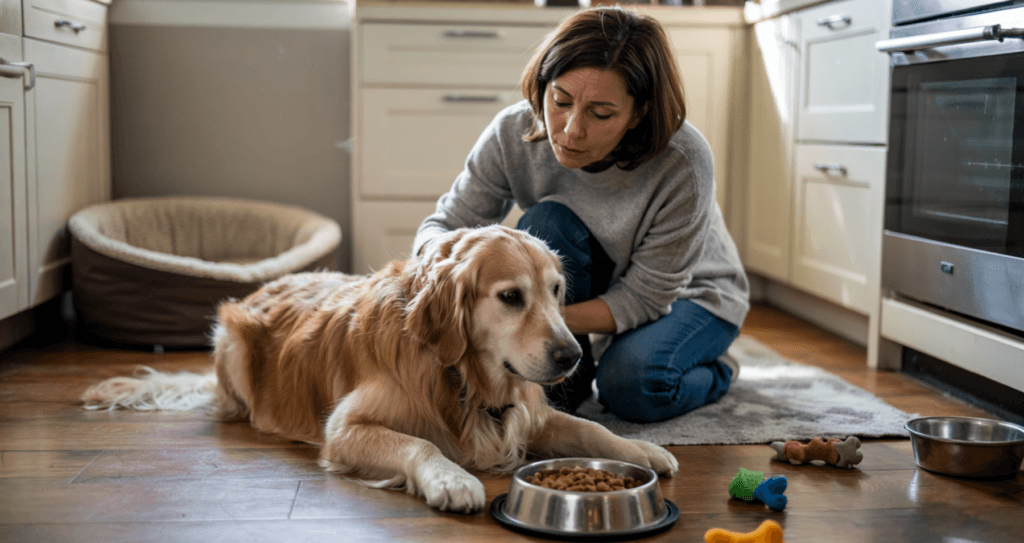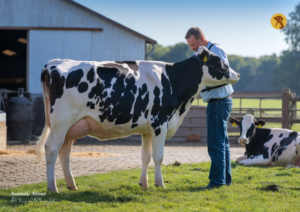As pet parents, we know the joy of watching our furry friend gobble up their food with excitement—but what happens when that excitement vanishes overnight? If your dog suddenly refuses to eat, it can feel alarming. You’re left wondering, Is something wrong? Am I doing something differently? Don’t worry—you’re not alone. This comprehensive Dog Nutrition Guide will walk you through common causes, effective solutions, and how to know when to seek help from your vet.
Why Has My Dog Stopped Eating?
When your dog loses interest in food, it’s not just a minor inconvenience—it’s a clue. Appetite loss is one of the body’s first ways of signaling that something is off, whether it’s physical discomfort, emotional stress, or simply boredom with the same old kibble. Understanding the reason behind the behavior is the first step toward helping your pup regain their love for mealtime.
1. Picky Eating Habits
Just like humans, dogs can develop finicky preferences—especially when they’re used to being spoiled with treats or table scraps. If your dog starts refusing his regular food but perks up for snacks, you may be dealing with a case of learned pickiness. It’s not necessarily a sign of illness, but it can quickly lead to bad eating habits and nutrition imbalances.
2. Switching Dog Food Brands
Changing your dog’s food too suddenly can confuse their taste buds or upset their stomach. Imagine eating your favorite meal for weeks, only to be served something totally different without warning. For dogs, sudden brand switches or flavor changes can lead to digestive issues, rejection, or even anxiety around eating. Always make food transitions gradual to help your dog adjust.
3. Stress or Anxiety
Dogs are sensitive creatures, and emotional stress can take a toll on their appetite just like it does for us. Have you recently moved homes, brought home a new baby or pet, or even gone back to work after spending more time at home? Changes in the environment or routine can cause your dog to feel unsettled—and that stress can lead to temporary food refusal.
4. Medical Issues
When a dog stops eating, it might be a whisper from their body telling you something is wrong. Appetite loss may indicate dental pain, gastrointestinal problems, infection, or even organ dysfunction like liver or kidney issues. If your dog is still drinking water but avoiding food—or worse, showing signs of pain or vomiting—it’s best to consult your vet immediately.
5. Age and Energy Levels
Your dog’s age plays a big role in their appetite, and what’s normal for a young pup may be very different for a senior dog. Puppies sometimes skip meals but stay energetic and playful, which is usually okay. On the other hand, older dogs may experience a natural drop in appetite due to slower metabolism, arthritis pain, or difficulty chewing. Understanding age-related eating patterns can help guide your next steps.
When to Worry About a Dog Not Eating
Skipping one meal now and then might not be serious, but consistent appetite loss is a red flag that shouldn’t be ignored. If your dog refuses to eat for more than 24 hours or shows signs of illness like vomiting, lethargy, or rapid weight loss, it’s time to get help. As loving pet owners, we sometimes wait and hope things will improve—but prompt action can make all the difference in a dog’s recovery.
Key warning signs include:
- Refusing food for 24+ hours
- Acting tired, sluggish, or disinterested
- Vomiting or diarrhea
- Painful or swollen mouth
- Sudden weight loss
If your dog has lost their usual spark, don’t wait—listen to your instincts and book a vet visit.
What to Do If Your Dog Won’t Eat
If your dog is snubbing their food, don’t panic—there are several safe and simple ways to bring back their appetite. Rather than forcing them to eat or switching foods too often, start by creating a consistent feeding routine and trying small adjustments that stimulate their senses.
1. Stick to a Feeding Schedule
Dogs thrive on routine—and when they know when to expect food, they’re more likely to eat it. Offer food at set times and remove it after 15–20 minutes if untouched. Avoid leaving food out all day, as this can lead to disinterest and grazing behavior that disrupts healthy eating habits.
2. Warm the Food Slightly
A warm meal can work wonders, especially when a dog’s sense of smell needs a boost. Heating your dog’s food for just a few seconds can enhance its aroma, making it more tempting—just be sure it’s not too hot.
3. Add Low-Sodium Broth or Toppers
Sometimes all it takes is a little flavor to get those tails wagging again. Adding a spoonful of low-sodium chicken broth, wet food, or a nutritious topper can make even dry kibble more enticing to a picky eater.
4. Try Hand-Feeding
Hand-feeding your dog can restore trust and comfort, especially during illness or stress. If your dog is hesitant to approach their bowl, offering a few bites from your hand can ease their anxiety and help rebuild a positive association with mealtime.
5. Exercise Before Mealtime
Just like humans, dogs are more likely to eat after a good workout. A short walk or play session can help stimulate your dog’s appetite and bring back that mealtime enthusiasm.
Home Remedies for Picky Dogs
Nature offers a few gentle, dog-friendly ingredients that can spark appetite without upsetting your dog’s tummy. When used correctly, these home remedies can support digestion and reintroduce variety without complicating your dog’s diet.
- Pumpkin puree – Fiber-rich and tasty, ideal for digestion
- Boiled chicken and rice – Simple, bland, and safe for sensitive stomachs
- Plain Greek yogurt – Adds protein and healthy probiotics
- Peanut butter (xylitol-free) – Tasty, calorie-dense, and dog-approved in moderation
These remedies are helpful tools, but always check with your vet first—especially if your dog has allergies or health conditions.
Vet Advice for Dog Not Eating
If you’ve tried everything and your dog still won’t eat, it’s time to turn to the experts. A vet can rule out serious conditions and offer tailored advice, including medications or prescription diets that support healing and appetite recovery.
Vets may suggest:
- Blood tests or imaging to rule out disease
- Dental exams for pain or broken teeth
- Prescription dog foods with enhanced flavor and nutrients
- Appetite stimulants if needed
Remember: catching health problems early can prevent bigger issues down the road.
Fixing Long-Term Dog Feeding Problems
Helping your dog build healthy eating habits is a journey—but the rewards are lifelong. Whether your dog skips meals occasionally or is always picky, establishing consistency and setting boundaries are essential steps toward long-term success.
Try these proven tips:
- Serve meals at consistent times every day
- Avoid table scraps and people food—they can make regular food less appealing
- Keep treats under control—they should never replace meals
- Use interactive feeders to make eating more fun
- Rotate proteins carefully while sticking to trusted food brands
By being patient and consistent, you’ll gradually turn mealtime struggles into a balanced, stress-free routine.
FAQ
1. Why did my dog suddenly stop eating but is still drinking water?
If your dog won’t eat but is still drinking water, it could mean they’re feeling unwell—possibly from a mild stomach upset, stress, or dental pain. However, if this continues for more than 24 hours or is paired with lethargy or vomiting, consult your vet. Staying hydrated is good, but not eating at all can quickly lead to problems.
2. Should I be worried if my dog skips a meal?
Not necessarily. Dogs sometimes skip meals just like people do, especially if they’re hot, tired, or feeling slightly off. But if your dog misses more than one meal, or shows other signs like lethargy or behavior changes, it’s worth investigating further.
3. How can I encourage my dog to eat his food again?
You can try warming the food slightly, adding a bit of low-sodium broth, or mixing in a healthy topper like pumpkin or plain yogurt. Feeding on a set schedule and reducing treats can also help reset mealtime expectations. If all else fails, hand-feeding or engaging in light play before meals may stimulate their appetite.
4. What are common reasons dogs lose their appetite?
Some common causes include:
- Food boredom or pickiness
- Stress or environmental changes
- Dental issues or pain
- Illness (like kidney or liver issues)
- Recent vaccinations or medication
- Switching dog food brands too quickly
5. How long can a dog go without eating?
Healthy dogs can usually go without food for about 2–3 days, but it’s not recommended to wait that long. If your dog hasn’t eaten in over 24 hours, it’s best to call your vet—especially if they’re young, elderly, or have existing health concerns.
6. Can I give my dog human food to get them to eat?
While a small amount of plain cooked chicken, rice, or pumpkin is usually safe, avoid giving your dog seasoned, spicy, or fatty foods. Never feed foods like onions, garlic, chocolate, or anything containing xylitol. When in doubt, stick with dog-safe options or ask your vet first.
7. Should I change my dog’s food if he won’t eat it?
Only change your dog’s food after ruling out medical reasons for appetite loss. If your vet confirms your dog is healthy, you can gradually introduce a new brand or protein source over 7–10 days. Sudden changes can upset their stomach and make the issue worse.
8. Is my dog just being picky? How can I fix that?
Yes, some dogs learn that holding out gets them tastier options like treats or people food. To fix picky eating, offer food at consistent times, remove uneaten food after 15–20 minutes, and avoid giving snacks in between. Patience and routine usually work best!
Disclaimer: This post is for informational purposes only. For serious or persistent issues, always consult a licensed veterinarian.







